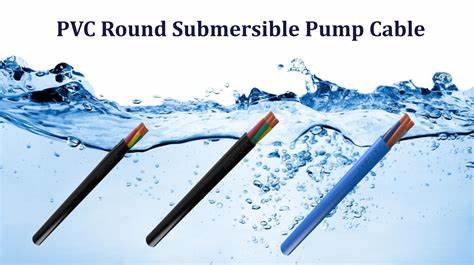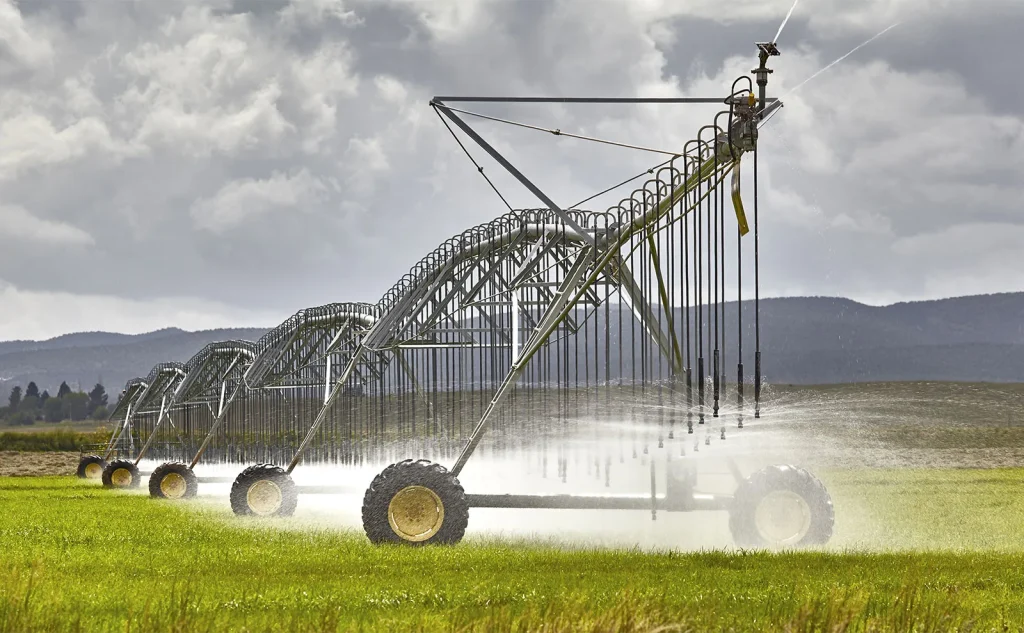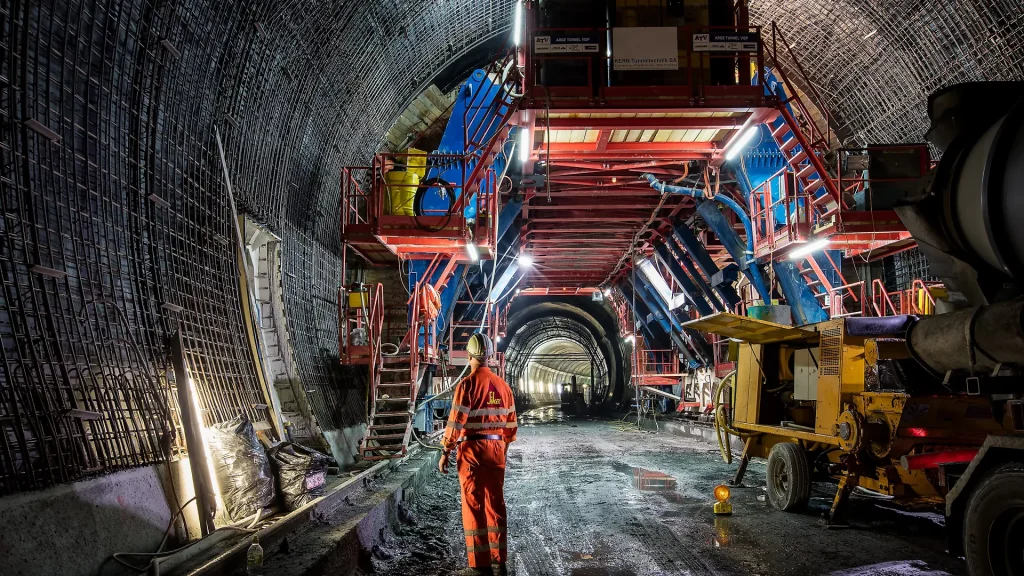In many industrial and infrastructure projects, electrical systems need to operate not just in dry, controlled environments, but also in wet, submerged, or corrosive conditions. Traditional power cables fail in such situations due to water ingress and insulation breakdown. This is where submersible cable—specially designed to function underwater or in wet locations—become indispensable.
In this article, ZMS Cable will explore what a submersible cable is, how it is constructed, the industries that rely on it, and why using a submersible power cable is crucial for long-term system safety and performance.
Understanding the Basics: What Is a Submersible Cable?
A submersible cable is an electrical power or control cable specifically engineered to operate fully or partially submerged in water or other liquids. These cables are commonly used in submersible pumps, underwater motors, irrigation systems, and marine or offshore installations. Unlike standard cables, submersible pump cables are built with high-grade waterproof insulation, durable sheathing, and sometimes metallic armoring for added mechanical protection.

This makes them ideal for use in underground water wells, sewage systems, water tanks, industrial cooling systems, and flood-prone environments.
Key Features of Submersible Cable Design
The unique construction of submersible cables makes them unique. ZMS Cable takes you through the key components that ensure long-term reliability in underwater applications:
1. Waterproof Insulation
Submersible cables are insulated using materials like XLPE (cross-linked polyethylene), EPR (ethylene propylene rubber), or PVC, all of which offer excellent moisture resistance and thermal stability.
2. Flexible and Durable Sheath
A strong outer sheath—typically made of PVC, rubber, or HDPE—protects the cable from abrasion, oils, chemicals, and mechanical damage. This outer layer also prevents any water ingress under pressure.
3. High-Quality Conductor
The core of the cable is typically made of high-conductivity copper, sometimes tinned to resist corrosion. Tinned copper submersible cables are especially popular in corrosive or saline environments.
4. Optional Armoring
For applications in rocky boreholes or high-pressure underwater zones, steel wire or tape armor is added for mechanical protection. This is common in armored submersible pump cables used in mining and industrial settings.
Common Types of Submersible Cables
Submersible cables come in different configurations, depending on the application and installation method:
Flat Submersible Cable – Ideal for narrow borewells; offers easy handling and space-efficient installation.
Round Submersible Cable – Preferred for deeper installations or where more flexibility is needed.
Armored Submersible Cable – Built for high mechanical stress environments like underground shafts or rough terrain.
Popular configurations include:
3 Core Submersible Cable (for three-phase motors)
3 Core + 1 Earth Wire Submersible Cable
Single Core Submersible Cable (used for longer runs with parallel connections)
Where Are Submersible Cables Used?
Submersible cables are critical in industries where electrical components must operate under water, in moist conditions, or in liquid-filled environments. Key sectors include:
1. Water and Wastewater Management
Submersible cables are vital in municipal water supply systems, sewage treatment plants, and stormwater pumping stations, where motors and pumps operate entirely underwater.
2. Agricultural Irrigation Systems

In agriculture, deep well submersible pump cables are used to power irrigation systems, often installed in boreholes that reach hundreds of meters below the surface.
3. Oil & Gas Industry
ESP cables (Electrical Submersible Pump cables) are a specialized type of submersible cable used in offshore and onshore oil wells to power pumps located deep underground.
4. Mining and Tunneling Operations

In mines and tunnels prone to flooding or where water control is necessary, heavy-duty submersible cables are used to power drainage pumps and ventilation systems.
5. Marine and Offshore Applications
These cables are essential in sub-sea lighting, ROV (Remotely Operated Vehicle) systems, and offshore platform power connections, where marine-grade submersible cables offer corrosion resistance in saltwater.
6. Fountain and Pool Installations

For architectural lighting and water features, low voltage submersible cables are often used to power submerged lighting fixtures and control systems.
Advantages of Using High-Quality Submersible Cables
1. Unmatched Water Resistance
The primary reason to choose submersible cables is their ability to operate continuously underwater without degradation or current leakage.
2. Enhanced Durability
With insulation and sheathing materials designed to resist abrasion, oil, chemicals, and UV exposure, these cables can last 10–15 years or longer in harsh environments.
3. Flexible Installation
Whether flat or round, armored or unarmored, submersible electrical cables are designed for easy installation in borewells, wells, or tanks, even in tight or irregular spaces.
4. Safe and Reliable Power Transmission
They prevent short circuits and electric shocks, making them ideal for residential, commercial, and industrial use.
5. Reduced Maintenance Costs
Because of their rugged construction, submersible pump wires require less frequent replacement and result in fewer breakdowns, reducing long-term maintenance costs.
Technical Considerations When Selecting a Submersible Cable
Choosing the right submersible cable depends on several key factors:
1. Voltage and Current Rating
Cables are available in various ratings, such as:
0.6/1kV submersible power cable for standard low-voltage applications.
3.3kV to 6.6kV cables for more powerful pumps or longer runs.
2. Conductor Size
The cross-sectional area (e.g., 3Cx95mm² + 1Cx50mm²) should match the load current and installation length to minimize voltage drop.
3. Temperature and Depth Ratings
For deep well or industrial use, ensure the cable can withstand:
High operating temperatures
Hydrostatic pressure at depth
4. Environmental Conditions
Use a chemical-resistant submersible cable with tinned copper and oil-resistant sheathing for chemically aggressive environments (e.g., oil fields or saline water).
Example Product: ZR-YJV22-0.6/1KV 3CX95+1CX50 Submersible Cable
One popular submersible cable model is the ZR-YJV22-0.6/1KV 3CX95+1CX50. This cable includes:
XLPE insulation
Steel tape armoring
Flame-retardant PVC sheath
Three 95mm² power cores + one 50mm² neutral/ground core
This armored submersible cable is ideal for heavy-duty water pump installations, underground mining operations, and high-load industrial environments requiring submersion resistance and mechanical protection.
Submersible Cable vs Standard Cable – Key Differences
| Feature | Submersible Cable | Standard Cable |
| Water Resistance | High (Fully waterproof insulation and sheath) | Low (Not designed for wet environments) |
| Insulation Material | XLPE, EPR, Rubber | PVC, PE |
| Mechanical Protection | Often armored with steel wire or tape | Limited or none |
| Application Environment | Wet, submerged, chemical-prone | Dry, indoor or protected environments |
| Lifespan in Harsh Conditions | 10+ years with minimal degradation | Prone to failure when exposed to water |
Long-Tail Keywords for Submersible Cable (Naturally Integrated)
Throughout this article, we’ve organically included long-tail keywords such as:
Submersible pump cable for deep wells
armored submersible cable for mining
marine-grade submersible power cable
chemical-resistant submersible wire
Low-voltage submersible cable for irrigation
XLPE insulated submersible cable
tinned copper cable for submersible motors
These phrases target specific user intents and improve search engine visibility for niche applications of submersible cables.
Why Submersible Cables Are a Must-Have
If you’re installing equipment that will operate in water or damp conditions, using a high-quality submersible cable is non-negotiable. These cables offer superior performance, safety, and durability, making them essential for water wells, oil wells, irrigation systems, marine vessels, and industrial environments.
By selecting the right submersible electrical cable—one that’s rated for your voltage, depth, and chemical exposure—you not only protect your equipment but also ensure uninterrupted power delivery and system efficiency for years to come.